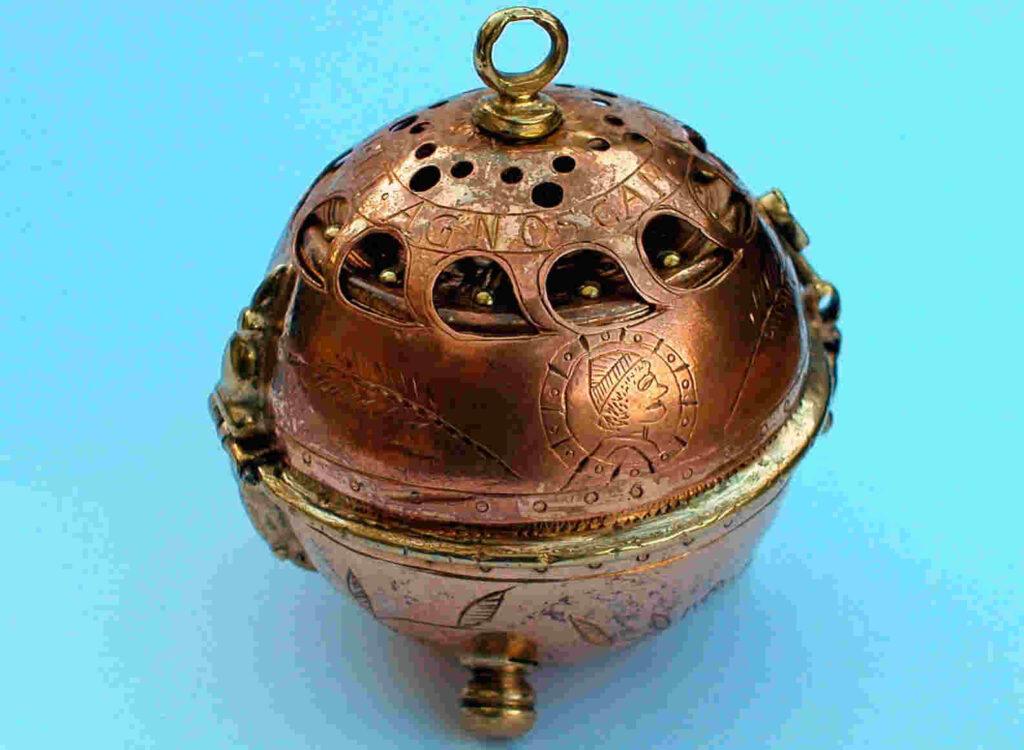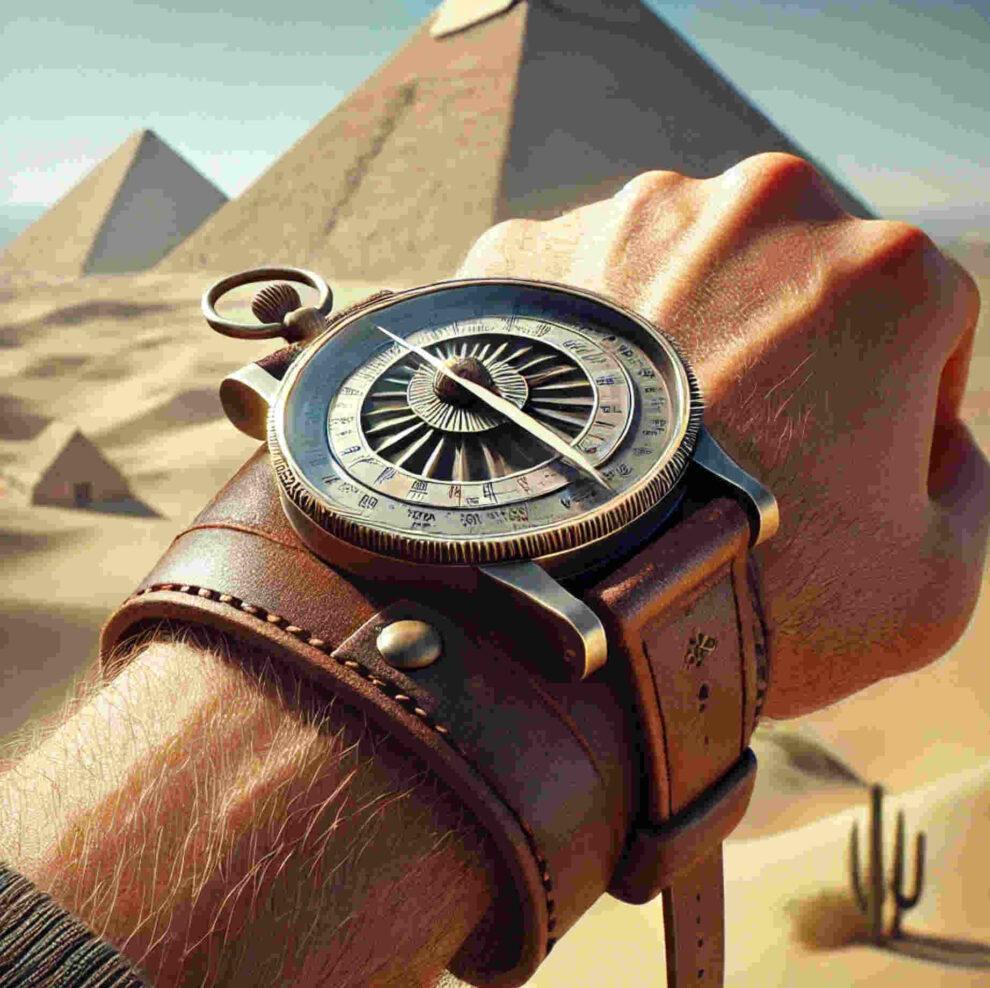
Wristwatches are more than mere timekeepers—they’re statements of personal style, markers of historical moments, and symbols of technological progress.
As wristwatches evolved, so too did their watch straps (also called watch bands), transforming from simple leather loops to intricate bands that reflect the tastes and needs of each era.
This journey through the history of watch straps not only highlights the materials and designs that have come and gone but also tells the stories of the pioneering brands that shaped the watch industry. Let’s explore the fascinating evolution of wristwatch straps, with a focus on the key events that defined each period.
The Early Days: Leather Straps and Precursors
The Origins (1505)

The history of wristwatches—and by extension, their leather straps—begins with the invention of portable timepieces.
In 1505, Peter Henlein, a clockmaker from Nuremberg, crafted one of the earliest known portable watches, known as the “portable drum watch.”
This early timepiece, worn as a pendant rather than on the wrist, was a significant technological achievement of its time.
These drum watches, often encased in brass and worn on chains, were the first to bring timekeeping out of the tower and into personal use.
While not yet wristwatches, these early devices set the stage for the miniaturization and personal use of timepieces that would eventually lead to wristwatches.
The Evolution of Portable Timepieces (1571)
By 1571, Queen Elizabeth I of England received a watch set into a bracelet from Robert Dudley, her close friend and rumored suitor.
This is one of the earliest known instances of a timepiece being worn on the wrist, albeit as a piece of jewelry rather than a practical tool. The concept of a wristwatch slowly began to take shape, although it would be centuries before wristwatches became commonplace.
During this period, watches were still primarily worn as pendants or kept in pockets, with leather and fabric often used to create ornamental bands or straps for these early portable timepieces.
The Rise of Pocket Watches (1675)

In 1675, King Charles II of England popularized the wearing of pocket watches, which were designed to fit into waistcoat pockets.
This shift from pendant watches to pocket watches was driven by advancements in watchmaking, including the development of the balance spring in 1657 by Christiaan Huygens (1629-1695), which greatly improved the accuracy of watches. Huygens was a mathematician, astronomer and all-round smart guy who also discovered Saturn’s satellite Titan and was the first to clearly see the planet’s rings and to explain their appearance over time. The Huygens probe, carried to Titan by Cassini, is named in his honor.

Pocket watches were typically paired with leather fobs or chains, and while they weren’t worn on the wrist, this period laid the groundwork for the later development of wristwatches. The use of leather in these fobs hinted at the material’s future role in wristwatch straps.
The Transition to Wristwatches
The First Wristwatches (1810)
The first wristwatch as we know it today was created in 1810 by Abraham-Louis Breguet, a renowned Swiss watchmaker, for Caroline Murat, the Queen of Naples. This wristwatch, designed as a luxury item, featured an oblong case and was attached to a strap made of gold thread.
While it was a far cry from the practical wristwatches that would later become popular, Breguet’s creation was a significant milestone in watchmaking history. It demonstrated that timepieces could be both functional and fashionable, setting a precedent for future wristwatch designs.
Women’s Bracelet Watches (1868)
In 1868, Patek Philippe, another legendary Swiss watchmaker, created a wristwatch for Countess Koscowicz of Hungary. This watch, designed as a bracelet, further solidified the wristwatch’s role as a piece of jewelry, particularly for women.
The watch was adorned with precious metals and gemstones, and its strap was crafted to be both elegant and functional. This era saw wristwatches primarily worn by women, as men continued to favor pocket watches.
The straps during this time were often made from fine leather or delicate metal chains, reflecting the luxurious nature of these early wristwatches.
The Military Influence (1880s)
The late 19th century saw the wristwatch begin to evolve from a fashion accessory into a practical tool, particularly for military use. In the 1880s, Girard-Perregaux, a Swiss watchmaker, began producing wristwatches for German naval officers.
These watches were designed with practical, durable leather straps that could withstand the rigors of military life. The shift towards practical wristwatches was further accelerated by the needs of soldiers during the Anglo-Burma War of 1885, where wristwatches proved to be more convenient than pocket watches for timekeeping in the field. These early military wristwatches were a precursor to the widespread adoption of wristwatches in the 20th century.
The Pre-War Era: Popularization of Wristwatches
The Advent of Purpose-Built Wristwatches (1904)
In 1904, Louis Cartier, the famous French watchmaker, designed the Cartier Santos for his friend, Brazilian aviator Alberto Santos-Dumont. Santos-Dumont needed a practical timepiece that he could easily check while flying, and the Cartier Santos, with its leather strap, met this need perfectly.
This watch is often credited as one of the first modern wristwatches designed specifically for men, which allowed for different strap size, marked a turning point in the history of wristwatches.
The success of the Cartier Santos helped popularize wristwatches among men, who had previously favored pocket watches.
The Rise of Swiss Watchmaking (1905)
In 1905, Hans Wilsdorf founded Rolex, a brand that would become synonymous with luxury and precision. Wilsdorf recognized the potential of wristwatches, particularly their appeal to men, and focused on creating wristwatches that were both accurate and stylish.
Rolex was one of the first brands to use metal straps, which would become a hallmark of the brand’s designs. The durability and elegance of these metal straps made Rolex watches a favorite among the elite, setting the stage for the widespread adoption of wristwatches in the years to come.
The Impact of World War I (1914)
By 1914, as World War I broke out, the practicality of wristwatches had become undeniable. Soldiers on the battlefield needed a way to keep time that didn’t require fumbling with a pocket watch.
Wristwatches with leather straps became standard issue for many soldiers, and their utility in combat situations helped to cement their popularity. The war also led to advancements in watch technology, including the development of luminous dials and unbreakable glass, which made wristwatches even more practical for military use.
By the end of the war, wristwatches had become widely accepted as the timepiece of choice for both men and women.
The Rise of Metal Straps
The Shift to Metal (1930s)
In the 1930s, wristwatch straps saw a significant evolution with the introduction of metal bands. These metal straps offered durability and a sleek, modern aesthetic that leather couldn’t match.
Rolex was at the forefront of this shift, introducing the now-iconic Oyster bracelet in 1947. This metal bracelet became a symbol of luxury and reliability, solidifying Rolex’s reputation as a leading watchmaker.
Metal straps quickly became the preferred choice for those seeking a blend of functionality and elegance, and they remain a popular option to this day.
The Fashion Statement (1957)
In 1957, Omega released the Speedmaster, which featured a metal strap that would go on to become legendary when NASA selected the Speedmaster for its space missions.
The sleek, durable metal strap was not only functional but also a symbol of cutting-edge technology, making it a sought-after accessory.
Omega, founded in 1848, had long been known for its precision and quality, and the success of the Speedmaster cemented its status as a top-tier watchmaker. The metal straps used by Omega during this period became a defining feature of the brand’s most iconic watches.
The Flexibility of Fabric Straps
Nylon and Canvas Straps (1954)
In 1954, fabric straps emerged as a practical and casual alternative to leather and metal. Nylon and canvas straps became particularly popular among outdoor enthusiasts and military personnel.
Timex, originally established as the Waterbury Clock Company in 1854, played a significant role in popularizing these durable, affordable straps. Timex’s focus on creating sturdy, reliable watches made fabric straps a natural choice for its timepieces, which were designed for active lifestyles.
These straps were easy to clean, quick to dry, and offered a level of flexibility that other materials couldn’t match.
The NATO Strap Phenomenon (1973)
The NATO strap, introduced in 1973 by the British Ministry of Defence, became a favorite among military and civilian watch enthusiasts alike.
Made from durable nylon, the NATO strap featured a unique design that looped under the watch case, providing extra security.
Breguet, one of the oldest watchmakers in the world, founded in 1775, even incorporated variations of fabric straps into some of its luxury models, showcasing the versatility of these straps. The NATO strap’s military origins and practical design made it a popular choice for those looking for a rugged yet stylish watch strap.
The Silicone and Rubber Revolution
The Birth of Silicone Straps (1970s)
The 1970s marked the beginning of a new era in wristwatch straps with the introduction of silicone and rubber materials. These materials were particularly suited for sports and diving watches, offering flexibility and water resistance that leather and metal couldn’t provide. Seiko, a Japanese watchmaker founded in 1881, was a pioneer in this field, introducing rubber straps in its diving watches. These straps quickly became popular among divers and athletes for their durability and comfort, marking a significant shift in the design and functionality of watch straps.
The Age of Flexibility (1980s)
During the 1980s, silicone straps became a popular choice for everyday wear. These straps offered a comfortable fit and came in a variety of vibrant colors, making them a fashionable accessory as well as a functional one. Timex embraced silicone straps in its sports watch line, offering affordable and durable options for active consumers. The flexibility and softness of silicone made these straps ideal for a wide range of activities, from running to swimming, further expanding the versatility of quick release wristwatch straps.
The Modern Era: Interchangeable and Smart Straps
The Rise of Interchangeability (2000s)
The 2000s brought about a new trend in wristwatch straps: interchangeability. Watch enthusiasts were now able to customize their timepieces by swapping out straps to match their outfit, mood, or occasion. Rolex, Omega, and other luxury brands began offering a variety of strap options for their iconic models, allowing for endless personalization. This trend catered to the growing demand for versatility in fashion, making watches more adaptable and personalized than ever before.
Smartwatch Straps (2010s)
The 2010s saw the rise of smart watches, which revolutionized the concept of wristwatch straps. Brands like Apple and Samsung led the way with smart straps that incorporated technology such as fitness tracking and notifications. Seiko, known for its innovation, also ventured into the smartwatch market, offering straps that combined traditional craftsmanship with modern technology. These smart straps blurred the line between fashion and function, creating a new category of wearable tech that appealed to both tech enthusiasts and traditional watch lovers.
The Future of Watch Straps (2020s and Beyond)
As we look to the future and search for the perfect strap, watch straps are set to continue evolving with advancements in technology and materials.
The 2020s are likely to see a rise in eco-friendly materials such as recycled plastics and vegan leather, as brands respond to growing consumer demand for sustainable fashion. Breguet, with its long history of innovation, is already exploring the use of these materials in its luxury straps.
Additionally, advances in smart fabric technology may lead to straps that can charge smartwatches through solar energy or adapt to the wearer’s body temperature. As watch straps continue to evolve, they will remain an essential part of our lives, reflecting the changing needs and tastes of society.
Conclusion
From the early leather loops of the 16th century to the smart straps of today, the evolution of wristwatch straps is a journey through time itself.
Each era has seen the development of new materials and designs, reflecting the technological advancements and cultural shifts of the period.
Whether it’s the rugged leather of a trench watch, the gleaming metal of a luxury timepiece, or the high-tech silicone of a sports watch, wristwatch straps have always played a crucial role in both form and function.
As technology and fashion continue to evolve, so too will the humble watch strap, ensuring its place on our wrists for years to come.
FAQs
Metal straps, particularly those made from stainless steel or titanium, are known for their durability. They can withstand daily wear and tear and are resistant to water and scratches.
To clean a leather watch strap, gently wipe it with a damp cloth. For deeper cleaning, use a leather cleaner or a mild soap solution, then wipe dry. Avoid soaking the strap, as this can damage the leather.
While silicone straps are typically more casual, they can work for certain formal settings, especially if they’re in a subdued color like black or navy. Pairing a sleek silicone strap with a minimalist watch face can create a modern, chic look.


















Add Comment